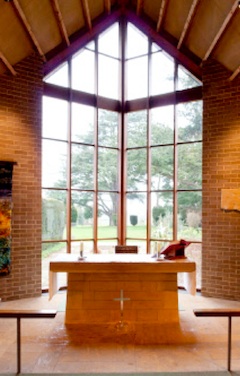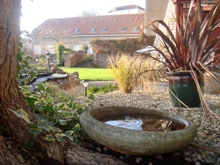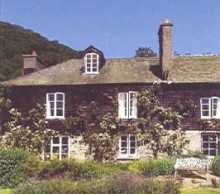| |
|
 |
Greening the Retreats - how the EcoRetreat Newsletter came about
Jan 21, 2014:
 |
 |
 |
Inside Holland House retreat centre |
A feature article published in Retreats 2014, the latest edition of the annual handbook of The Retreat Association, finds Victoria Finlay, ARC Communications Director, reflecting on the different ways retreat centres can promote sustainability.
In this extract she reflects on the inspiration for the EcoRetreat Newsletter, sent out quarterly from ARC since 2008.
In summer 2008, I checked in to spend two days at the lovely Holland House Retreat Centre in Worcestershire, along with four colleagues from the Alliance of Religions and Conservation (ARC).
We needed to plan the next big strategic push for ARC (a charity set up by HRH Prince Philip in 1995 to help secular environmentalists and faith leaders work together productively on the environment) and we knew that to be most productive ourselves we had to get out of the office.
As we debated how to help religions create long-term environmental plans in an effective way, we also began to notice where we were.
Holland House is a small Christian retreat centre in a rich agricultural heartland (famous for its asparagus). It is surrounded by lovely gardens, and we could see it had staff and guests who not only cared about the natural world but recognised that nature was a gift and creation of the almighty.
 |
 |
 |
the meditative garden at Emmaus House, Bristol |
However, there were no messages anywhere about the importance of protecting the natural world.
We realised that we could begin the conversation about the environment at this retreat centre. “I’d like to do something more about the environment,” said Rev Ian Spencer, who had just started as the warden of Holland House. “But I don’t quite know how.” There followed an inspiring conversation, in which Ian decided that Holland House would become a “Retreat Centre in Harmony with Creation”, and that he and his colleagues would spend the next months and years exploring exactly what that would involve.
The kitchen was already using the garden’s own organic fruit and vegetables for many of its meals (though was not then telling guests when it did so), and he decided to make changes to introduce fresh, local and organic produce, making sure all eggs were free-range (and explaining to guests why that was so important). He also wanted to register the Centre’s land (several acres beside the River Avon) as a Protected Environment. It was all very exciting.
As we were leaving, I picked up a copy of the 2008 edition of Retreats and it seemed as if there, in its pages, was a microcosm of everything we had been discussing. In its lists were some amazing magical places, all over the country, where men, women, families, colleagues could get away from their ordinary lives for a moment, and where people were almost certainly caring for creation in different and special ways.
 |
 |
 |
Dyffryn Farm, Powys, uses a mix of solar power, effective insulation and wood-burning stoves to keep warm and green in the winter. |
Yet here too, there was nothing about those retreat centres that had decided to be greener .
From that observation, the eco-retreat centre newsletter was born.
Retreats 2014 is an inspiring directory giving information about the resources and programmes at over 250 retreat centres across the UK. You can order a copy on-line here.
Useful linksClick here for a full archive of EcoRetreat Newsletters
|
 |
 |
|
|
|
|
|
 |
Christian Eco Retreat Newsletters
Archive of eco retreat newsletters. |
 |
Vision and Strategy
ARC's vision is of people, through their beliefs, treading more gently upon the earth. Link here to find out how we achieve this.
|
 |
The Christian Declaration on Nature - Assisi 1986
The original Christian Declaration on Nature was created in 1986, at a meeting held in Assisi by WWF-International. It stemmed from an idea by HRH the Prince Philip, at which five leaders of the five major world religions – Buddhism, Christianity, Hinduism, Islam and Judaism – were invited to come and discuss how their faiths could help save the natural world. |
 |
 |
|
|

